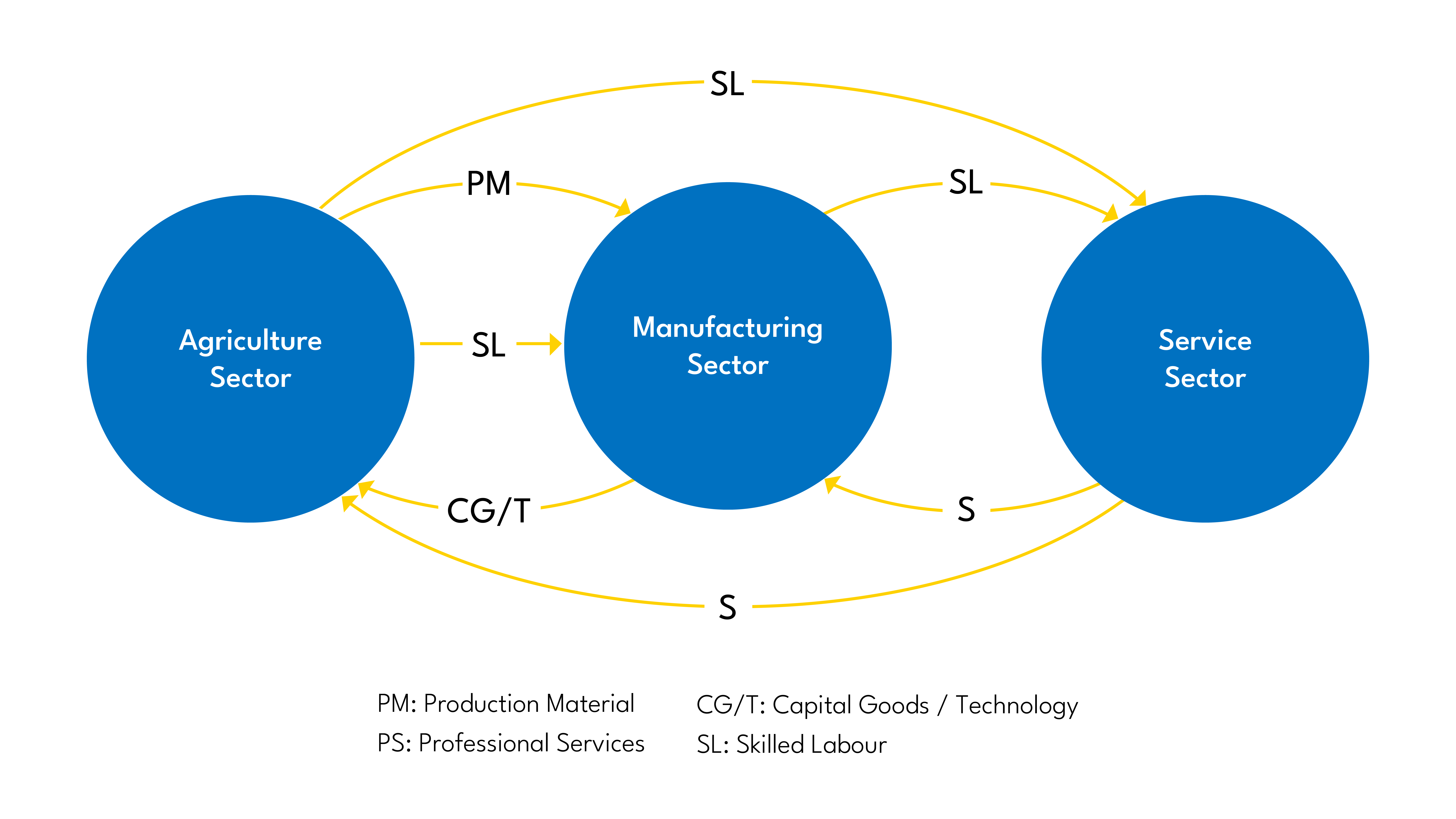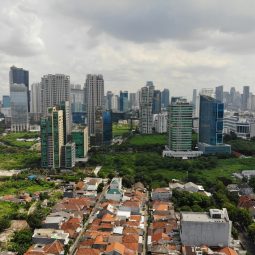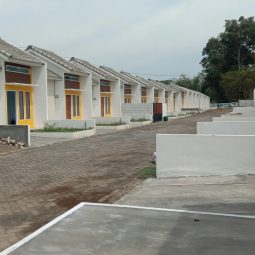Food security in particular to address the adequacy of supply and stability in prices of staple foods has been addressed by the Government since several years ago. However, the conflict between Russia and Ukraine shows that geopolitical conflicts can disrupt global food supply chains which in turn lead to a global food crisis. This situation emphasizes that the domestic production and distribution of staple food to meet the need of community independently is a very important factor in strengthening food security. Even though the Government has been massively building various agriculture infrastructures and production centers to increase staple food production, increasing farm management capabilities to increase farm productivity needs to be continuously encouraged.
To increase agricultural productivity, many countries have implemented precision agriculture. Precision agriculture is an agricultural management system that applies technological advances to ensure that crops get the right supply of water, nutrients, pesticides and herbicides, not excessive, so that on the one hand they can achieve optimal productivity and on the other hand they don’t reduce soil fertility and cause pollution. To increase the productivity of food agriculture in a sustainable manner, the Government should also consider the widespread application of precision agriculture. This will not only strengthen food security in a sustainable manner, but will also increase the contribution of the agricultural sector to GDP and create a market to attract investment in the production of advanced agricultural machinery and equipment, thereby strengthening inter-sectoral linkages of the national economic structure.
Issues on National Food Security
Global food crisis caused by the disruption of food distribution due to the conflict between Russia and Ukraine indicates that national food security is a very important factor to ensure national stability.
The Government has been addressing national food security since many years ago by establishing BULOG in 1967 aiming at assuring the availability and maintaining price stability of staple food, particularly rice. The Government’s approach to national food security has evolved towards food self-sufficiency. The Law Number 20 of 2018 addresses food sovereignty, food independence, and food security. This Law among others requires the Government and the Local Governments to be responsible on staple food availability. It also stipulates that (a) the Government is obliged to manage the stabilization of supply and price of staple food and, (b) the government must have sufficient reserves to overcome disruptions in the availability of staple food materials and maintain price stability.
The geopolitical conflict over Ukraine shows that the problem of national food security is not only resulted by the disruption of food production due to the existence of plant-disturbing organisms and disease outbreaks, natural disasters, environmental pollution, degradation of land and water resources, climate change, social disaster, conversion of land use functions, and economic disincentive. This geopolitical conflict disrupts the food and energy supply chain which in turn causes a global food crisis. This experience emphasizes that the ability to produce and distribute staple foods to meet the needs of the community independently is a very important factor in strengthening food security.
Food Production
Currently, the Government has massively built various infrastructures and agricultural production centers to increase the staple food production. The Government has also encouraged the use of superior seeds. But in addition to these efforts, the Government must also continue to strive the adoption of technology advancement for improving the capability on farm management: (a) soil management to utilize the soil’s productive capacity and preserve the soil fertility, (b) nutrient management to accurately determine the additional nutrients the soil needs for plant growth, and apply the right amount of manure, compost or commercial fertilizers that boost crop yields and agricultural profits while reducing nutrient losses to the environment, (c) water management to determine the water required for plant growth and apply water efficiently, taking into account water availability, drainage, and off-site water quantity/quality impacts, (d) weed control to determine the threat of weeds to the growth, productivity, and quality of crop yields, as well as the treatment needed to control them, and (e) pest control to determine the threat of pests and diseases to plant growth, productivity, and yield quality, and the need of preventive or improvement measures to control them.
Various countries have widely implemented precision agriculture to increase the farming productivity. Precision agriculture is an agricultural management system that applies technological advances to ensure that crops get the right supply of water, nutrients, pesticides and herbicides, not excessive, so that on the one hand they can achieve optimum productivity and on the other hand they do not degrade soil fertility and cause pollution. Precision agriculture utilizes advances in sensing technology (sensors) and advances in IT technology to collect, compile and analyse data on crop populations and conditions, soil conditions, and weather conditions to provide farmers with accurate predictive and prescriptive analysis of crop rotation and crop production practices so that agricultural productivity can increase optimally and sustainably. With advances in optical sensor technology, drones, cloud computing, and mobile IT devices, today’s precision farming systems are being applied to smaller agricultural areas so that they can be better adapted to the types of crops and environmental conditions in those areas.
Some technologies that are very important for the development and implementation of precision agriculture are as follows:
Drones and Sensing Devices
For detecting crop conditions, soil conditions, as well as air temperature, humidity, and rainfall, precision agriculture requires accurate sensing devices. One of the important sensors is high-precision optical sensor technology, particularly the high-resolution multispectral imaging cameras. The use of these sensing devices mounted on drones is indispensable for measuring crop populations and accurately monitoring crops under stress due to nutrient deficiencies and/or water shortages, pests, diseases, and weeds in large agricultural areas.
Predictive and Prescriptive Analytics
Predictive analytics is a branch of advanced analytics that are used to makes predictions about future events, behaviours, and outcomes. It uses statistical techniques and sophisticated predictive modelling to analyse current and historical data and assess the likelihood that something will take place. After building and deploying predictive models that generate accurate and timely predictions – what’s next? Many businesses see prescriptive analytics as the next logical step. This type of advanced analytics uses a combination of machine learning, business rules, and takes many different factors into account to prescribe the best possible course of action or decision. Predictive analytics helps to determine what’s likely to happen next, while prescriptive analytics can tell what to do about it.
Precision agriculture is currently applying these technologies. Based on data on population and plant conditions, soil conditions, and weather conditions, predictive analytics is used to predict various problems that must be overcome. Based on these predictions, prescriptive analytics technology is then applied to simulate various approaches and determine optimal preventive and curative treatments. It suggests the best possible actions to optimize farming practices such as watering, fertilizing, spraying pesticides or pesticides, and other treatments. Thus, waste of production inputs, land damage, and contamination of water sources can be avoided.
Variable Rate Swath Control
The need for fertilizers, herbicides, pesticides and other agricultural input materials at each location in the farming area varies according to the crops and soil type and conditions. For this purpose, variable rate swath control technology is developed to control the amount of material applied to a particular location based on the real conditions of that location. Basically, there are 2 bases for developing variable rate swath control technology, they are map-based and sensor-based.
Map-based variable rate swath control adjusts the provision of materials based on digital prescription maps. This map is generated by predictive and prescriptive analytics technology to map plant and soil conditions from each location in agricultural areas as well as input material requirements. The material application machine (or drone) is equipped with a map reader and a GPS signal receiver to determine the machine’s position when exploring agricultural land. Based on the information provided by the digital map and its position, the machine will adjust the application of the required material.
In sensor-based variable rate swath control, the material application machine is equipped with sensors to detect plant and land conditions, as well as a computer to calculate the required material requirements. Based on the data supplied by the sensor and based on the characteristics of the plant, the computer will calculate the material requirements in real time and adjust the application of the material.
Because both of these variable rate swath control technologies have advantages and limitations, a combination of the two technologies needs to be developed.
Phytogeomorphology
One of the important aspects in the further development of precision agriculture is phytogeomorphology which is the science of how terrain features affect plant growth, based on the understanding that physical, chemical and biological processes occurring on the surface or close to the soil surface affect the hydrology of agricultural land. The application of this science requires three-dimensional topographic technology to map:
- various features of agricultural land such as terrain, humidity level, pH, organic matter content, nitrogen, Mg and K content, salt content, as well as other necessary information.
- various parameters of crops conditions ranging from chlorophyll content to crops’ water status.
With advances in GPS, sensor technologies, and airborne LIDAR (Light Imaging, Detection, and Ranging) technology for measuring the distance and profile of a target using light pulses, the creation of three-dimensional topographic maps has been possible. Some studies provide an overview of the application of terrain features to improve precision agriculture.
As shown at right figure, from perspective of national interest the wide implementation of precision agriculture will not only improve profitability, productivity, and competitiveness of agriculture businesses, but will also strengthen national food security, enlarge the contribution of agriculture sector to GDP, and improve income distribution. It will also improve environment sustainability.

However, the widespread adoption of precision agriculture requires a structural transformation in the agricultural sector. The implementation of this agricultural management system requires large-scale agricultural businesses to adopt. Considering that currently most of the agricultural business is carried out by small farmers, efforts to unite small farmers in an agricultural area into a large-scale corporate farming is very necessary. Furthermore, the Government needs to provide education and training services to improve the skills of farmers and promote R&D capacity to increase the effectiveness of this agricultural management system. The Government should also promote the establishment of service entities to provide digital prescription maps so that map-based variable rate swath control technology can be applied.
The widespread application of precision agriculture will create a market for advanced agricultural equipment and machinery. To maximize its economic impact, the Government also needs to encourage investment in the production of precision agriculture hardware and software. Thus, as shown in the left diagram, the widespread application of this agricultural management system will not only increase the contribution of the agricultural sector to GDP, but will also strengthen the linkages between the agricultural sector and the manufacturing sector so that the national economic structure will be stronger.

Government Staple Food Supply Chain
As discussed above, the Government is required to have sufficient reserve of staple food to intervene shortage of staple food supplies or intolerable increase in staple food prices. Considering that the quality of the reserve must be maintained, the stock can only be hold within a certain period of time. Thus, the government must periodically resell its staple food stock. Given that the Government has to manage large volumes of reserve, the buying and selling rotation to maintain the level and quality of the stocks is also quite large. Therefore, the Government needs to consider that purchasing large volume of staple food from regions that have shortage or slight surplus of production will potentially disrupt price stability. On the other hand, selling the stock to these regions may stabilize the price.
The figure above shows a map of the regional’s balance of rice production and household consumption, grouped into 5 regional clusters based on the location of the main harbours of national sea toll:
- Belawan Cluster covers Nanggroe Aceh Darussalam, North Sumatra, Riau, and Riau Island regions.
- Jakarta Cluster covers West Sumatra, Jambi, South Sumatra, Bengkulu, Lampung, Bangka Belitung, Banten DKI Jakarta, West Jawa, and West Kalimantan.
- Surabaya Cluster covers Middle Jawa, DI Yogyakarta, East Jawa, Bali, Center Kalimantan, South Kalimantan, West Nusa Tenggara, and East Nusa Tenggara.
- Makasar Cluster includes all Sulawesi Island regions, East Kalimantan, and North Kalimantan.
- Ambon Cluster comprises of entire Maluku and Papua regions
On average, in the 2018-2021 period the Surabaya Cluster experienced a large surplus of rice production, the Makassar Cluster experienced a medium surplus, the Jakarta Cluster experienced a slight surplus, while the Belawan Cluster and the Ambon Cluster experienced a slight deficit.
As already discussed, the Government must buy rice in large quantities from clusters with large surpluses and distribute them to clusters with deficits. To optimize the cost of transporting rice from surplus to deficit clusters, as well as distributing rice to deficit regions, a hub and spoke supply chain network is needed. In each cluster, a supply chain hub is needed to support the fulfilment of rice supply to the regions under its control. If in the deficit cluster there is an area with a large enough surplus, then the procurement of rice in that area to meet stock needs at the hub can be carried out by considering its effect on price stability. The shortfall can be met from the hub in the large surplus cluster.
With this approach, stock requirements at each hub can be planned by considering the supply-demand balance in each cluster as well as the potential for supply disruptions in the regions within the cluster.

















